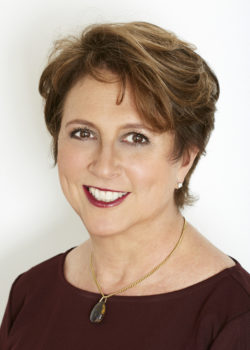
Image Credit: Caroline Harris
Caroline Harris’s career as a land use attorney stems from an early interest in urban affairs and planning. Harris was born in New York City and grew up in Peter Cooper Village. As a student at the then all-female Hunter College High School, she started the first student volunteer program for Head Start, earning Mayor Lindsay’s award for “Distinguished Volunteer Supervision.” Harris spent five months in Israel before entering Trinity College, where she majored in Religious Studies and minored in Urban Planning.
As a college student, Harris interned at the Department of City Planning’s Office of Housing. She spent her junior year taking courses in Urban Studies at MIT and Religious Studies at Harvard.
In only the second class to admit women at the University of Maryland Carey School of Law, Harris participated in the disabilities law clinic and interned with a judge through the school’s Asper Fellowship program. Upon graduating in 1979, Harris clerked for John V. Singleton, Jr., Chief Judge of the United States District Court for the Southern District of Texas.
Harris was one of only a few women litigators at Webster & Sheffield in Houston and New York. When Harris heard of an opening at City Planning, she ran to interview with City Planning’s general counsel Norman Marcus, who became her mentor. Harris said, “I took to zoning and working at City Planning like a fish does to water. I was able to use law for what I was interested in – urban planning. I’ve never looked back.” Her most provocative assignment involved assessing the First Amendment rights of the peep-show operators that lined 42nd Street and parts of 8th Avenue in connection with the state-initiated 42nd Street (Times Square) Redevelopment Project.
After three years at City Planning, Harris joined Tenzer Greenblatt, a real estate firm where, among other projects, she obtained Landmarks Preservation Commission approval for an adaptive reuse of the area beneath the 59th Street Bridge.
In 1987, Harris moved to Stroock & Stroock where she focused exclusively on zoning. In one of the last applications before the now-defunct Board of Estimate, Harris successfully represented the first private fiber optic telecommunications company to obtain a revocable consent from the City.
When the Soviet Union collapsed, Harris applied to the American Bar Association’s Central and Eastern European Law Initiative to assist in Russia’s transformation. Suddenly, Harris landed in Moscow where she consulted with the city government on land reform and housing privatization in the transition from communism to capitalism. Harris made three trips to the former Soviet Union over two years, including to Uzbekistan, Turkmenistan, Kazakhstan, and Kyrgyzstan.
Harris became counsel at Troutman Sanders leading its zoning practice in 2004. A neighbor’s challenge of her client’s project at the New York City Board of Standards and Appeals led to Harris becoming an expert on zoning lot mergers. Much of her work currently involves zoning lot mergers along with applications for special permits and rezonings before the BSA and City Planning. In her work, Harris has been involved with projects that have generated close to 1,750 units of affordable and supportive housing.
In 2008, Harris and husband Howard Goldman joined forces to form GoldmanHarris LLC, a zoning boutique and GoldmanHarris II, LLC, a WMBE. GoldmanHarris serves a wide array of land use related clients. Harris feels fortunate that she can use her transactional experience to inform her zoning practice, a task that she says often requires creative thinking and a thoughtful balancing of public and private interests.
Harris says that the overall Uniform Land Use Review Procedure has become more involved. She wonders if this inhibits nascent developers and entrepreneurs.
Entering the profession when few women practiced law, Harris overcame numerous challenges, and is committed to promoting women as professionals. She established an endowment at the University of Maryland Carey Law School for this purpose and is a Past President of Women in Housing and Finance. Harris is the Vice President of City Lore, an organization that promotes grassroots culture and diversity in New York City, and is a recent Fellow of the Urban Design Forum, an organization that brings together leaders in urban planning and design to foster creative approaches to urban issues.
By: Viktoriya Gray


“After three years at City Planning, Harris joined Tenzer Greenblatt, a mid-size real estate firm where, among other successful projects, she obtained Landmarks Preservation Commission approval for an adaptive reuse of the area beneath the 59th Street Bridge.”
Is she responsible for the privately owned and operated tennis bubble under the 59th Street Bridge (on an area that is a public park, the Queensboro Oval) in Manhattan?